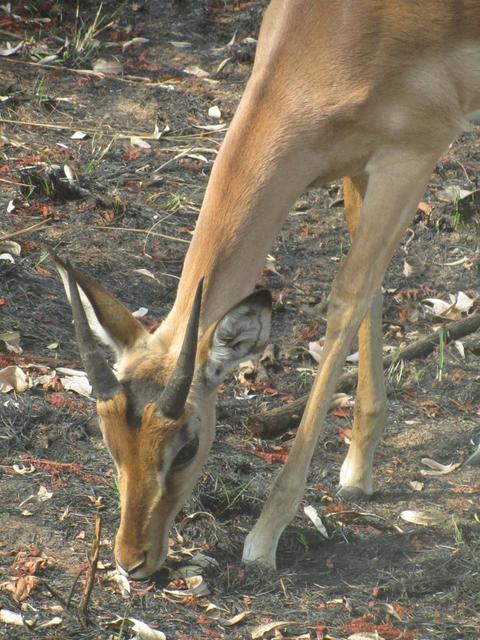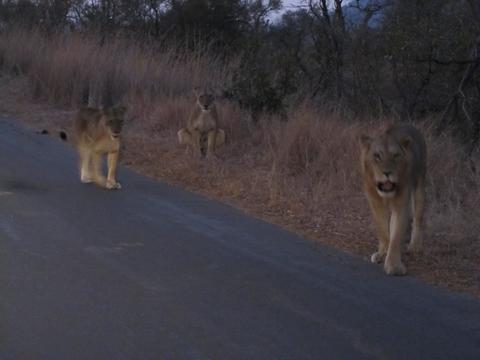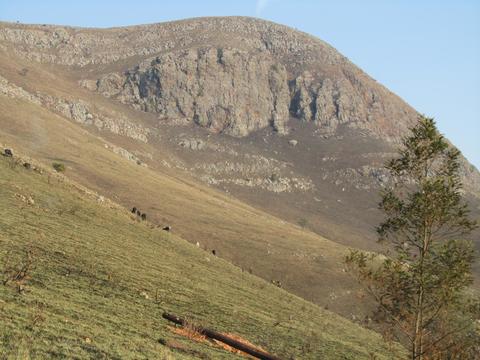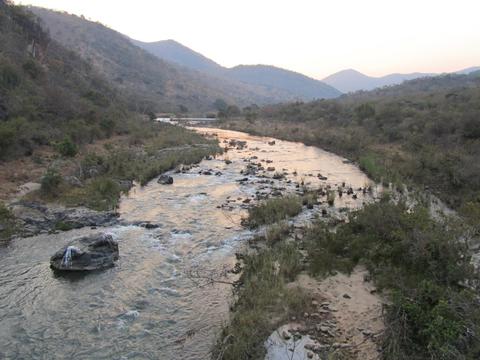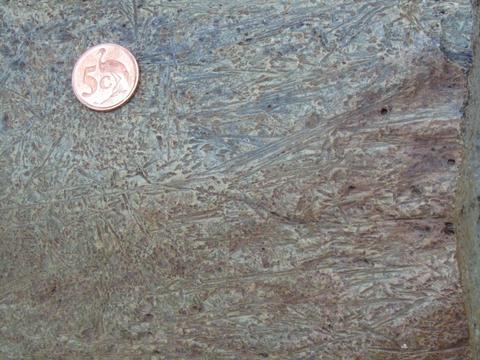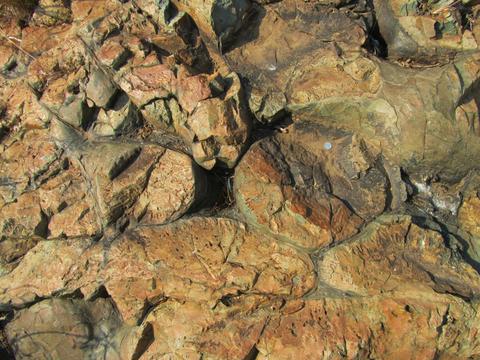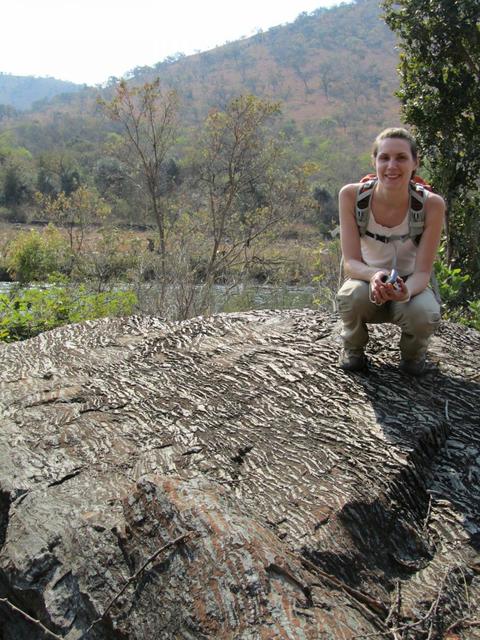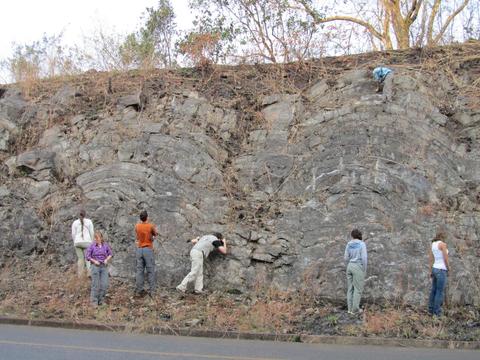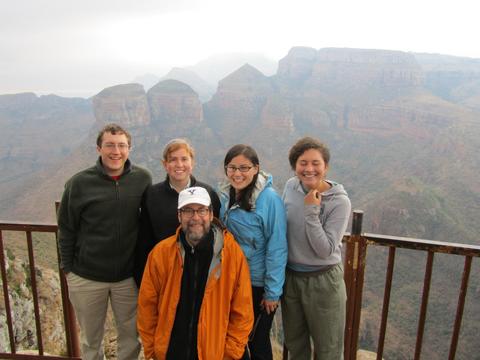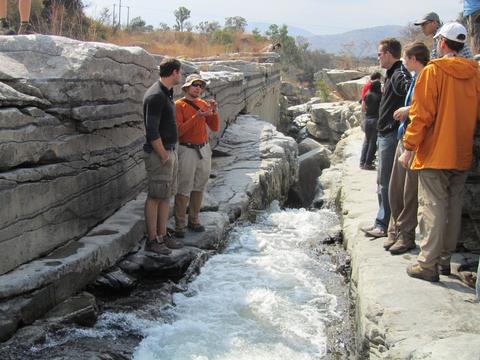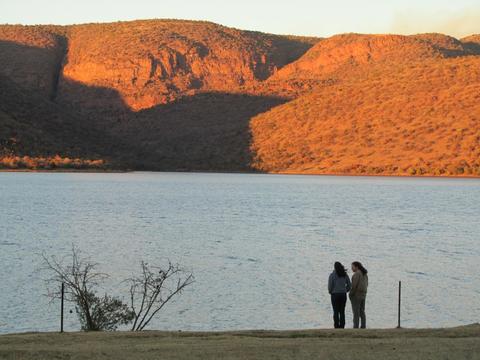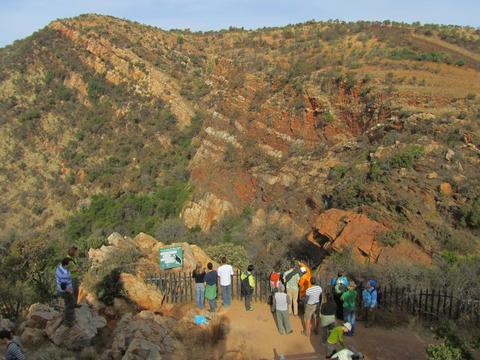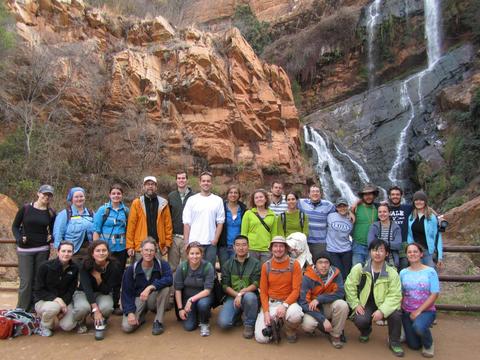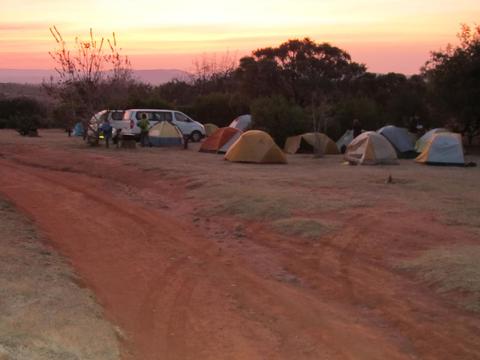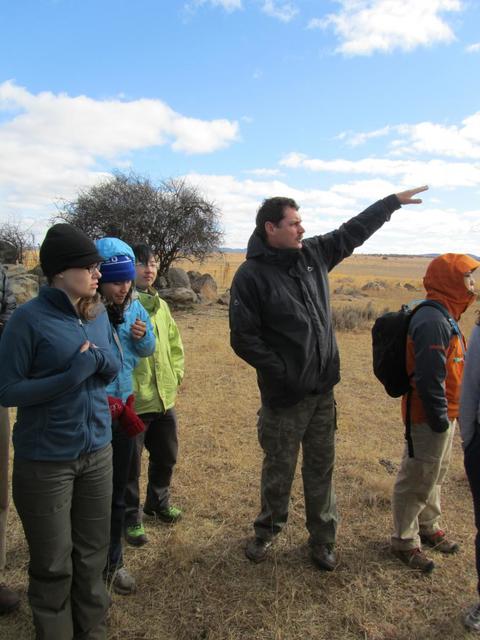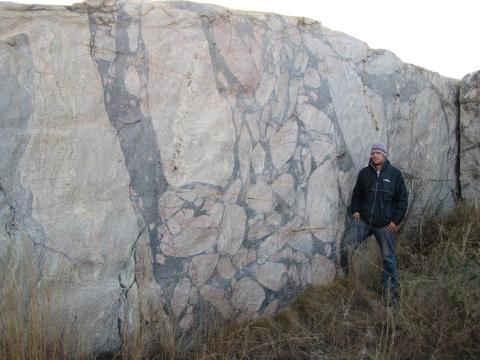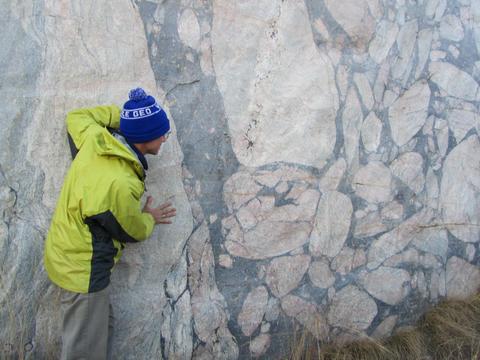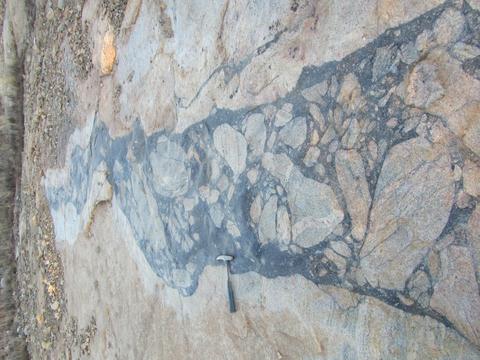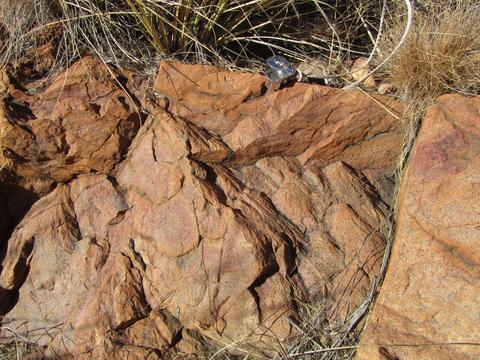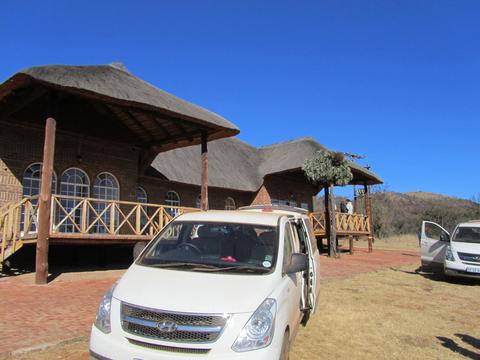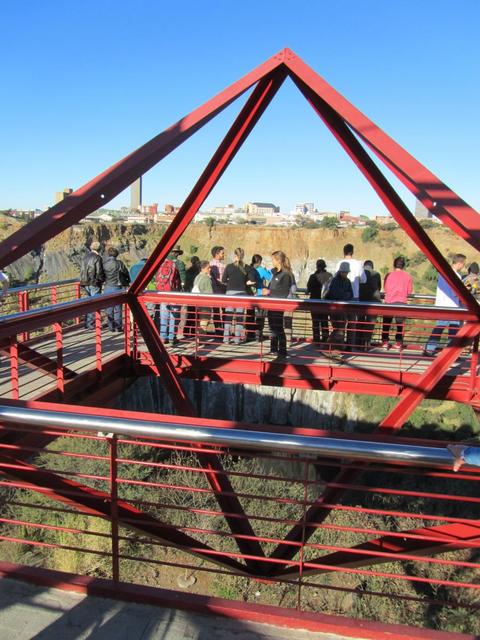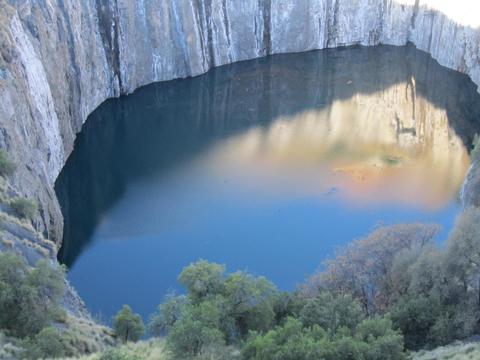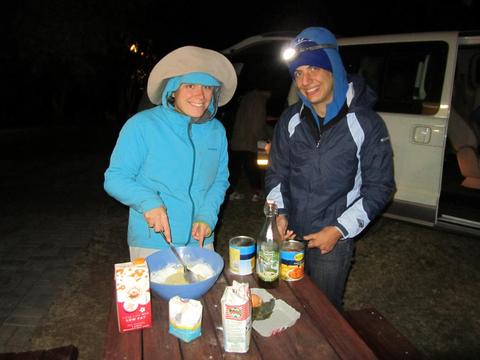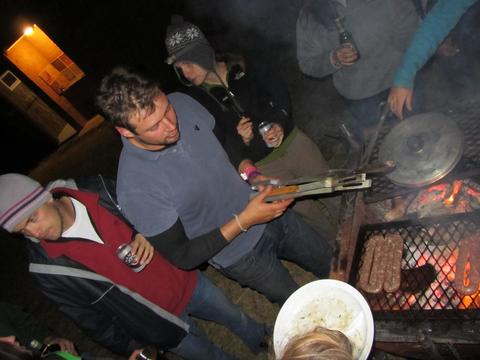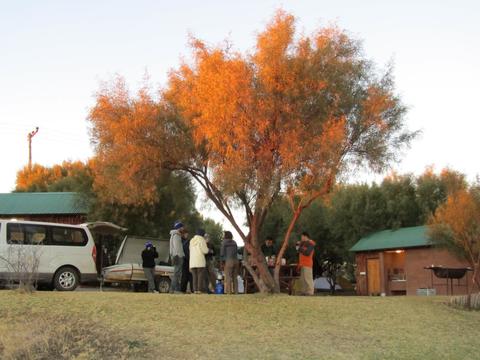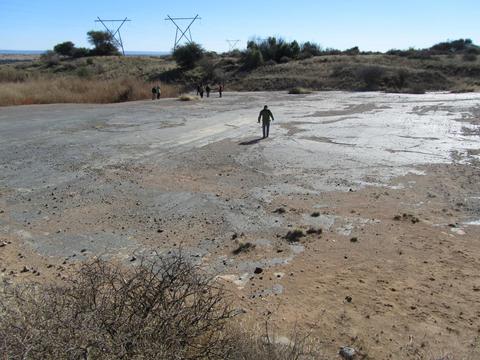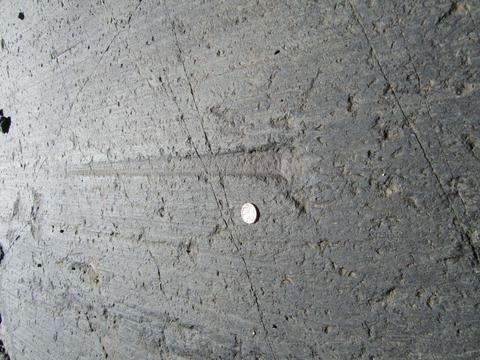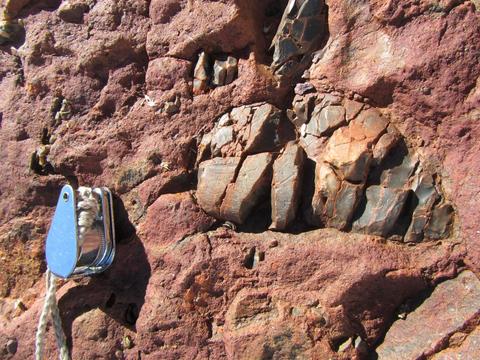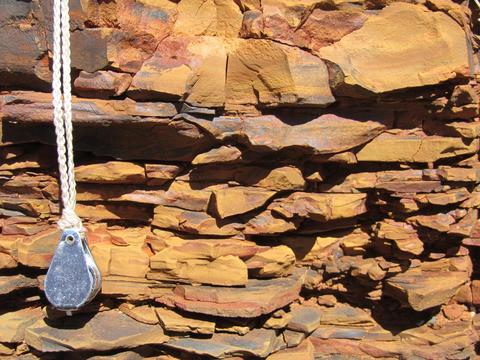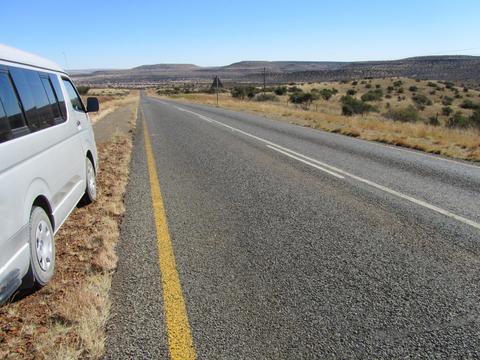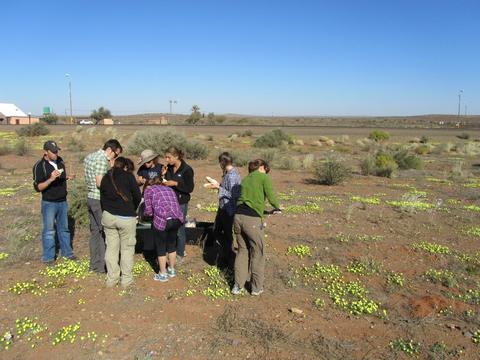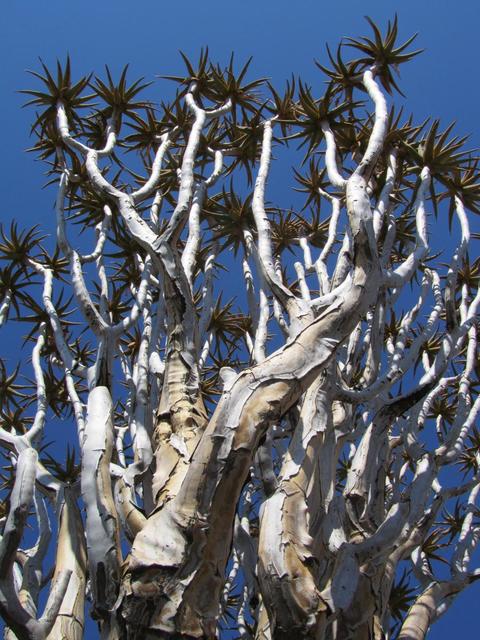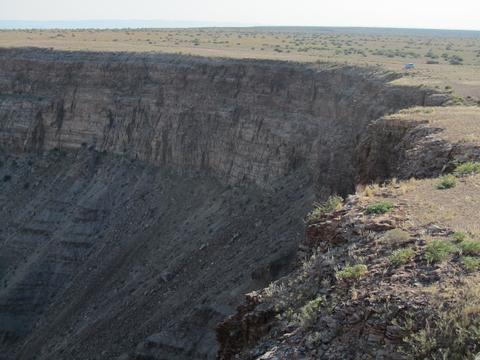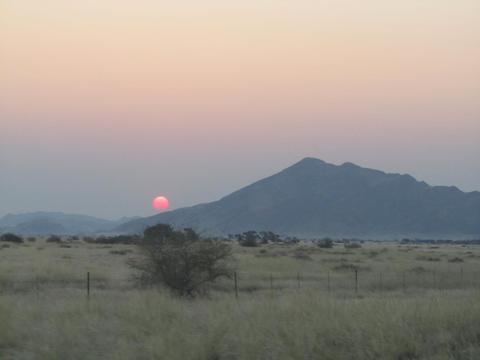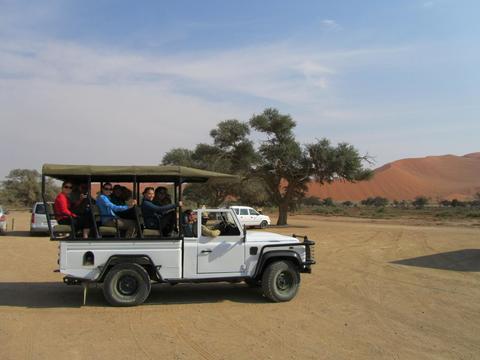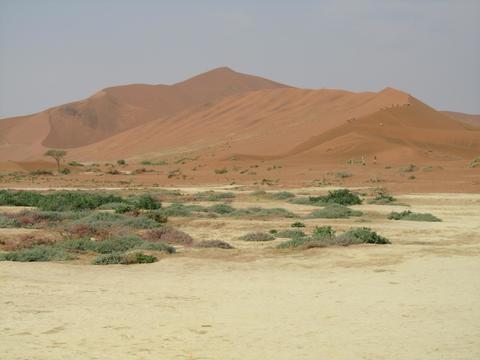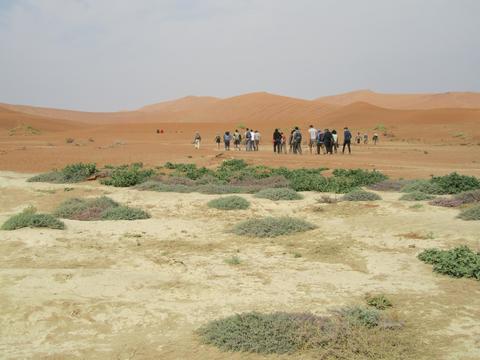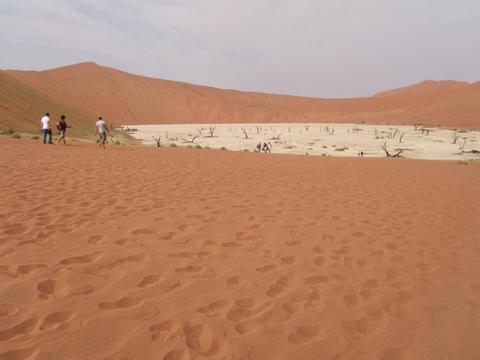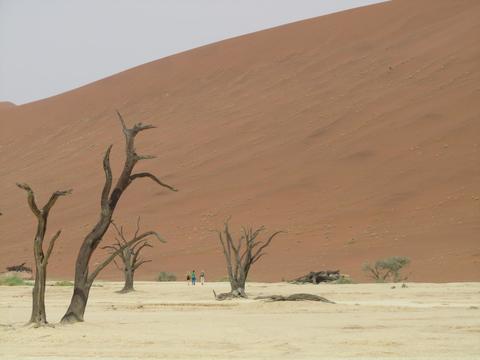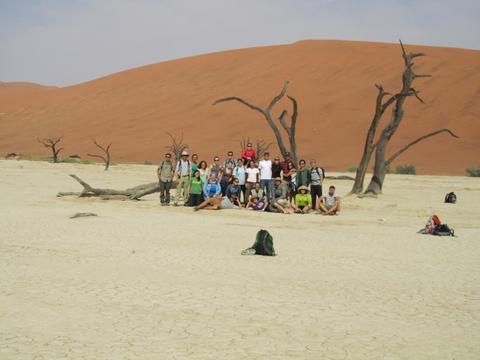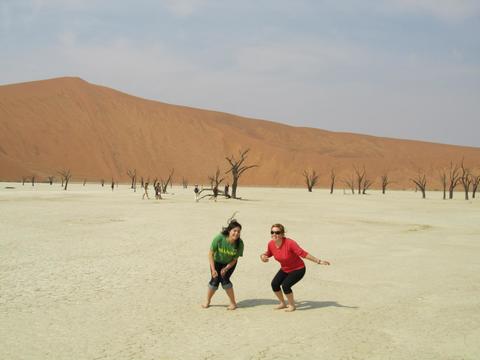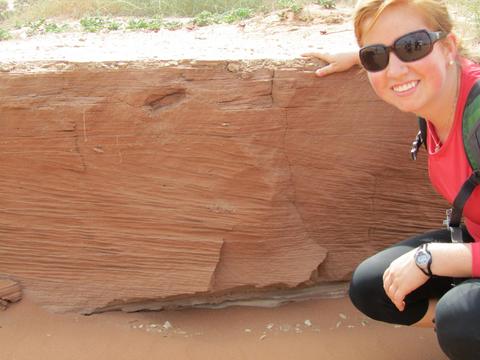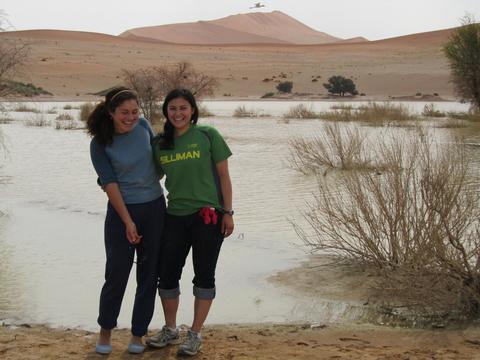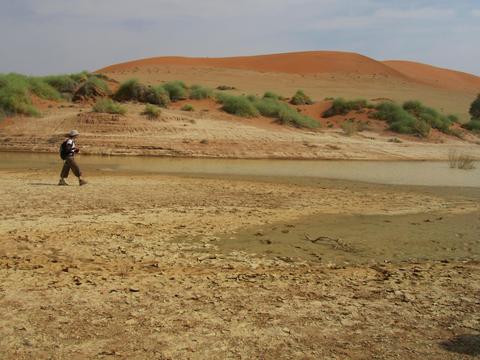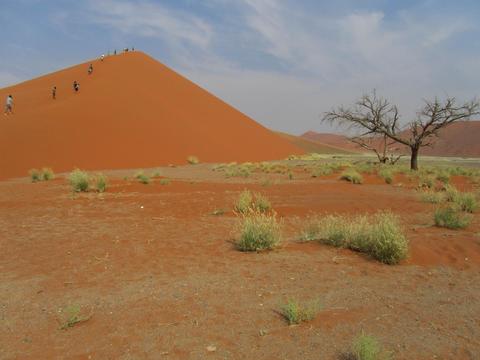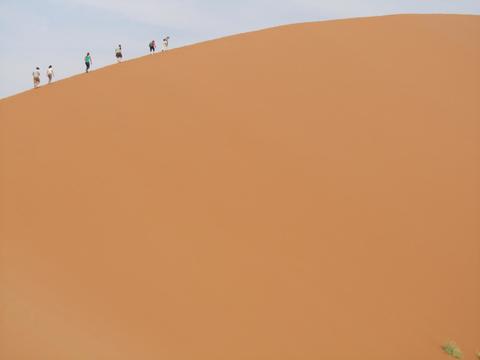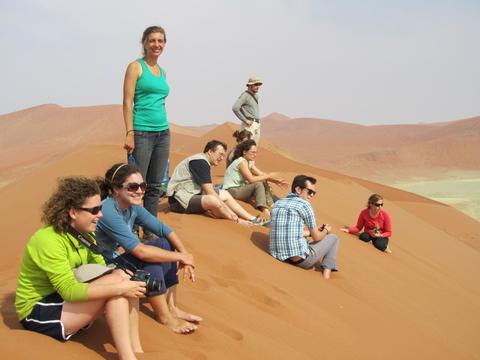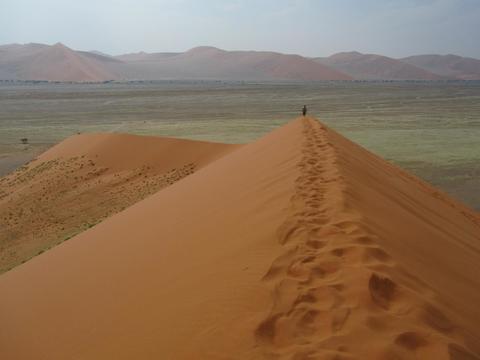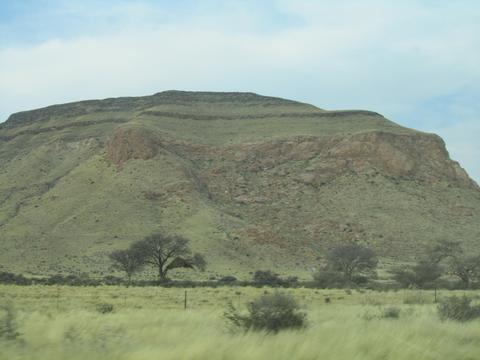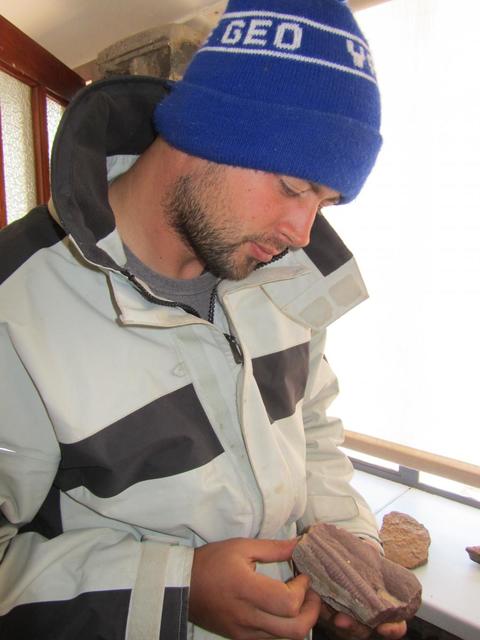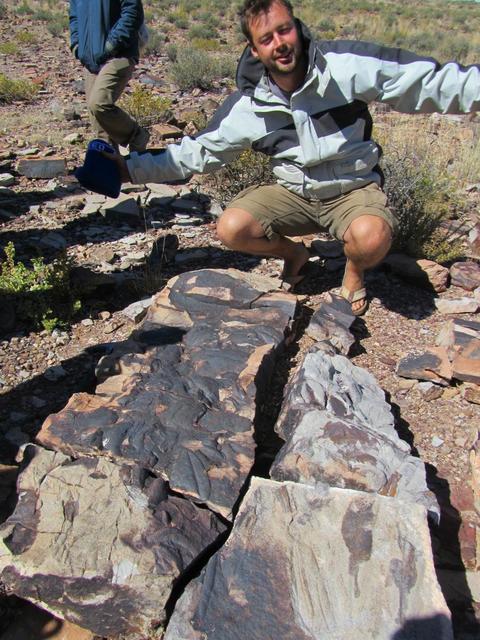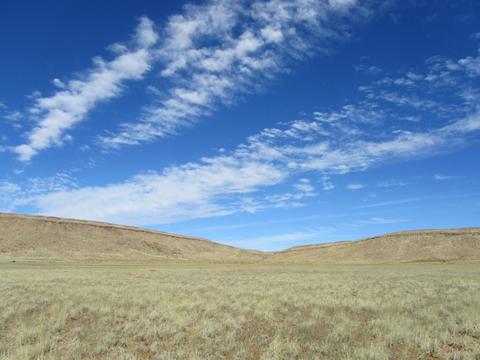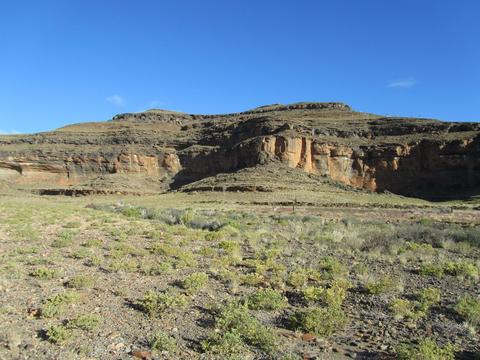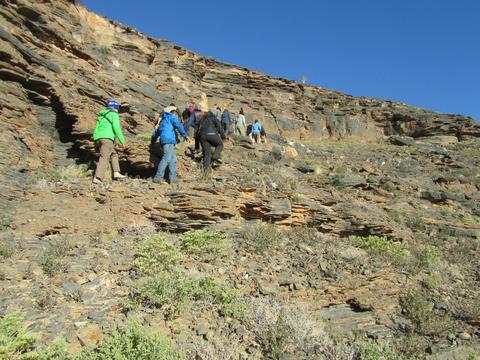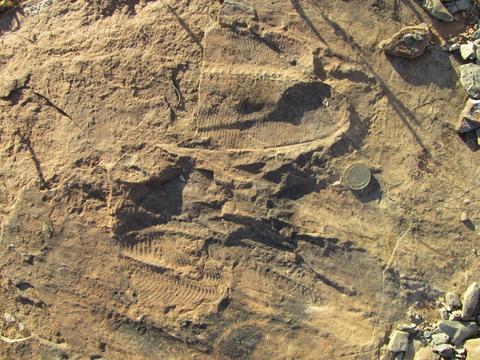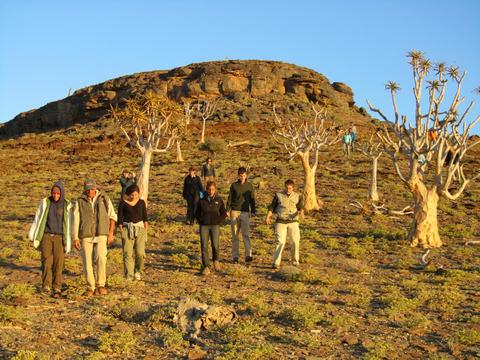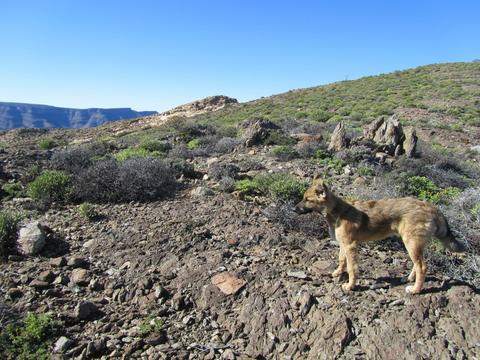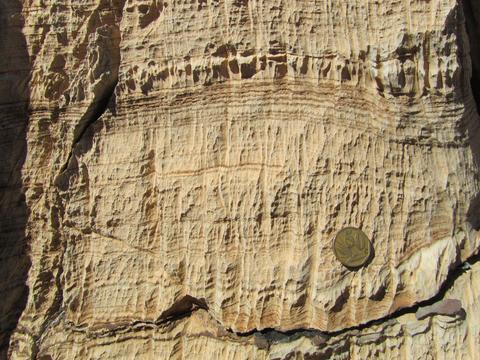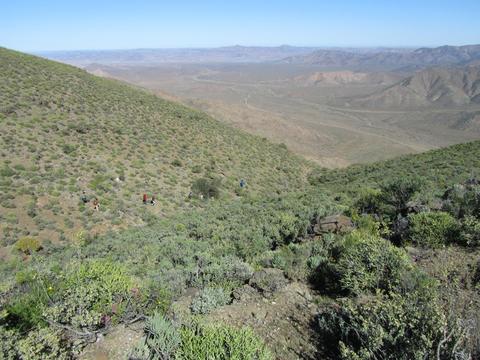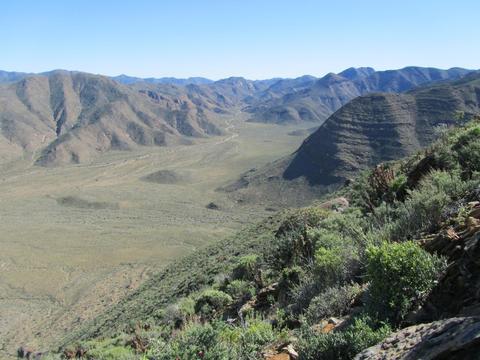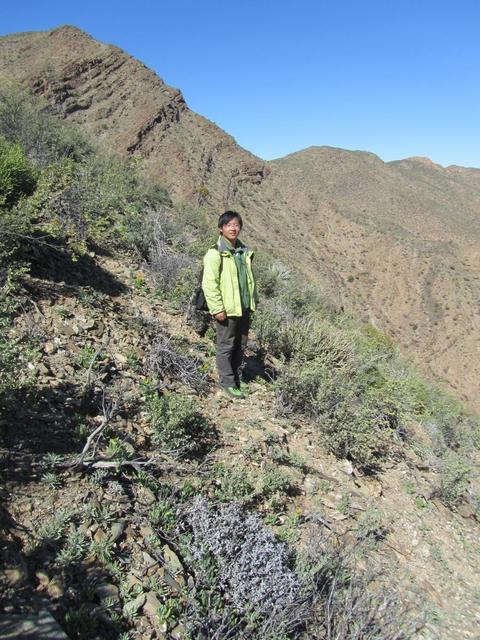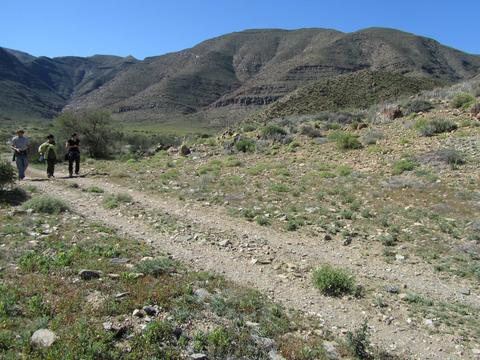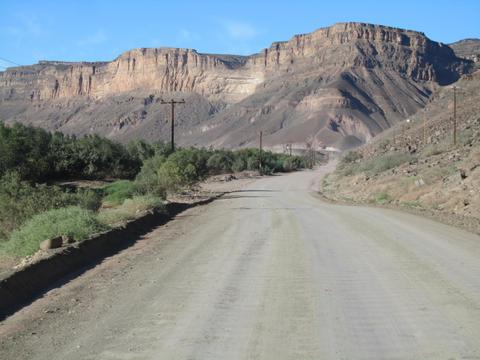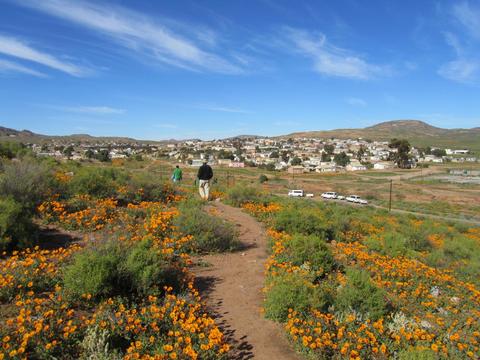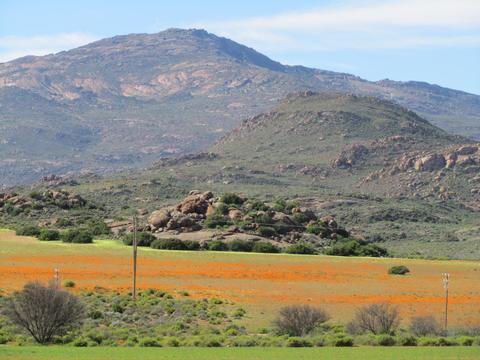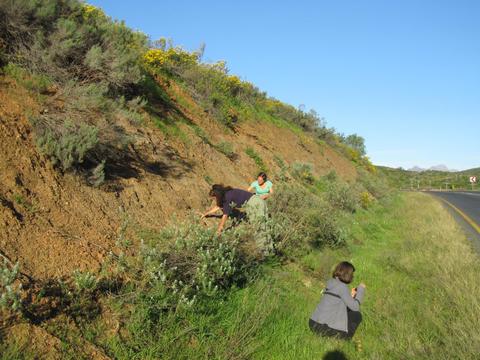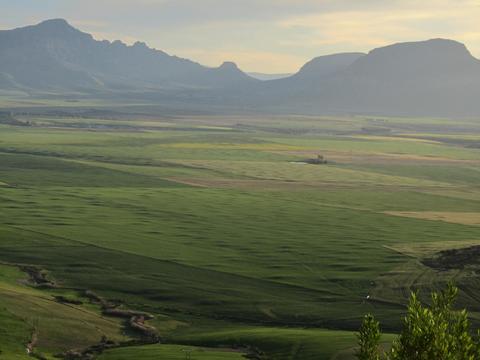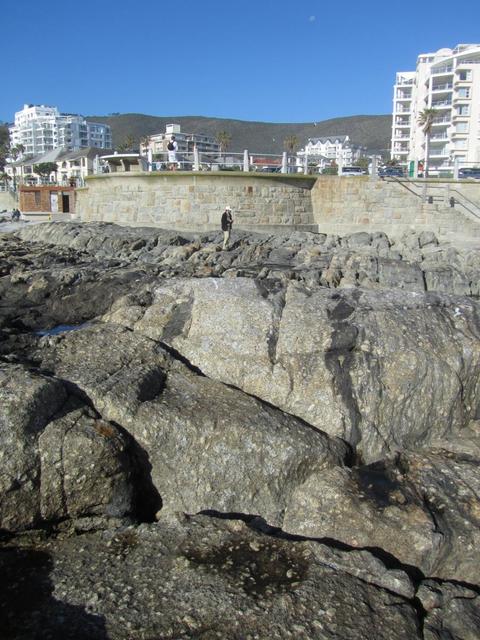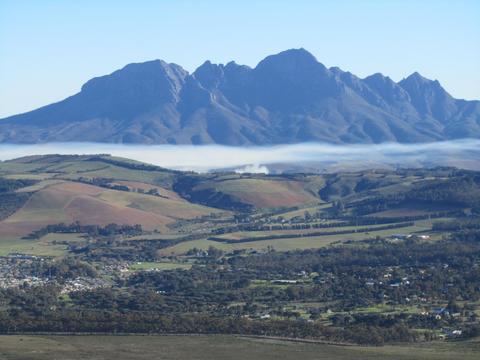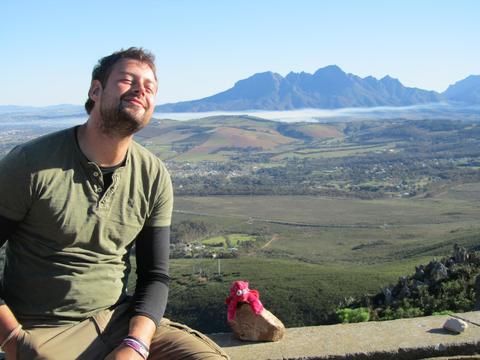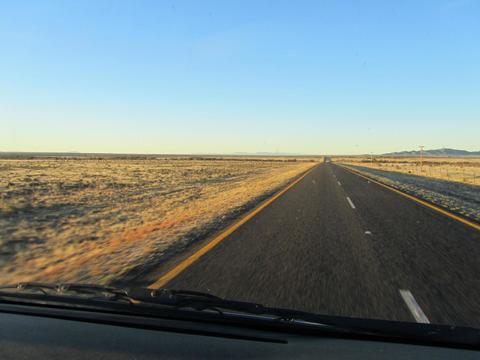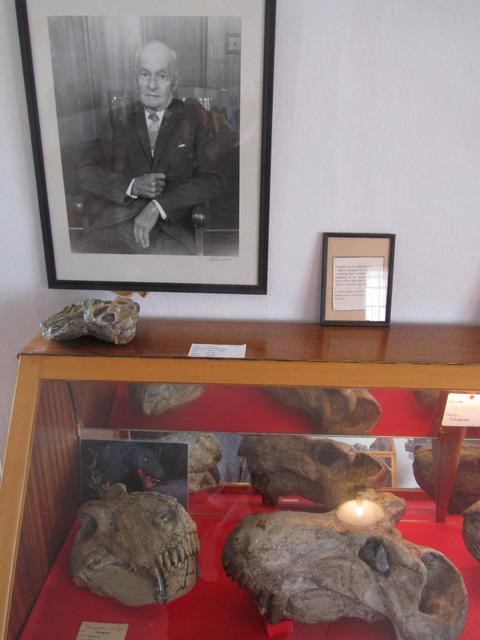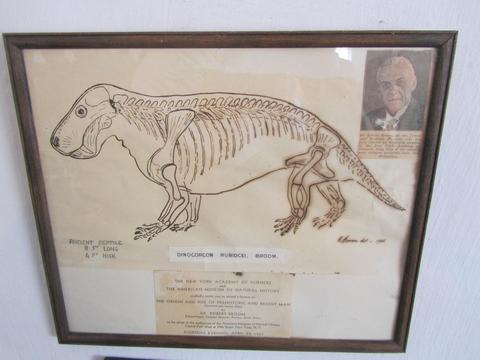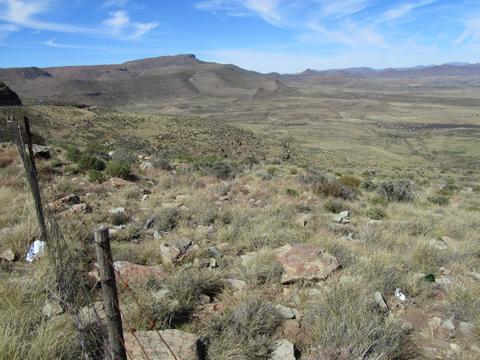Bulldogs in Southern Africa
In July and August, a group of 25 G&G students and faculty visited geological highlights of South Africa and Namibia. Led by David Evans and Jay Ague, and with extensive planning assistance from Evans’s long-time colleague and Professor Emeritus Nic Beukes (Univ. Johannesburg), the group journeyed through 3.5 billion years of Earth history as dramatically illustrated by the rich stratigraphic record in that region. Participants with interests in planetary science and geophysics marveled at Earth’s largest impact structure (Vredefort) and one of the best understood Archean cratons (Kaapvaal), including direct sampling of the mantle lithosphere by diamond-bearing kimberlite pipes (e.g., the Big Hole in Kimberley). In terms of structural geology and
petrology, the group traversed ancient mountain belts (e.g., Cape Fold Belt around Capetown) and world-famous igneous intrusions (e.g., Bushveld complex). Concerning paleoclimatology, the group visited rocks containing Earth’s oldest well preserved sedimentary and volcanic environments (Barberton Greenstone Belt), they saw pristine sedimentary sections spanning progressive atmospheric oxygenation through the Archean-Paleoproterozoic boundary interval (Witwatersrand and Transvaal Supergroups), and they witnessed direct evidence for “Snowball Earth” glacial deposits and cap carbonates formed in low paleolatitudes (Makganyene and Numees/Namaskluft, respectively Paleoproterozoic and Neoproterozoic in age). The trip was also a paleontological showcase of the world’s oldest alleged fossil-bearing sediments (Barberton), soft-bodied Ediacara biota from the end of the Precambrian (Aar and Swartpunt farms in Namibia), the richest terrestrial sections through the Permian-Triassic mass extinction (Rubidge farm near Graaff-Reinet), and amazing cave deposits with fossil hominids (Cradle of Humankind near Johannesburg). Geomorphology ranged from rolling savannah of the high veld, to deep canyons (e.g., Fish and Orange Rivers) incised into the 1.5-km-high plateau; from snow-tipped mountains (near the Cape of Good Hope), to some of the world’s highest sand dunes in one of the driest deserts (Sossusvlei, Namibia). The group spent a day appreciating African ecology in Kruger National Park, including a memorable episode involving one of the rental vans becoming mechanically disabled just as three lions approached and circled about. Fortunately, this was one of the few moments when things didn’t go quite as planned! Days spent under the African winter sunshine ended with campfires and “braai” South African-style barbecues under the stars. In all, after 8000 km of driving and three weeks of camaraderie, participants returned with a unique and firsthand experience with some of the world’s most important rock outcrops for elucidating Earth history.
Short Videos from the Trip:
Photos
Link to Daniel Field’s (G&G Graduate Student) photos
Slideshow Photos by David Evans


